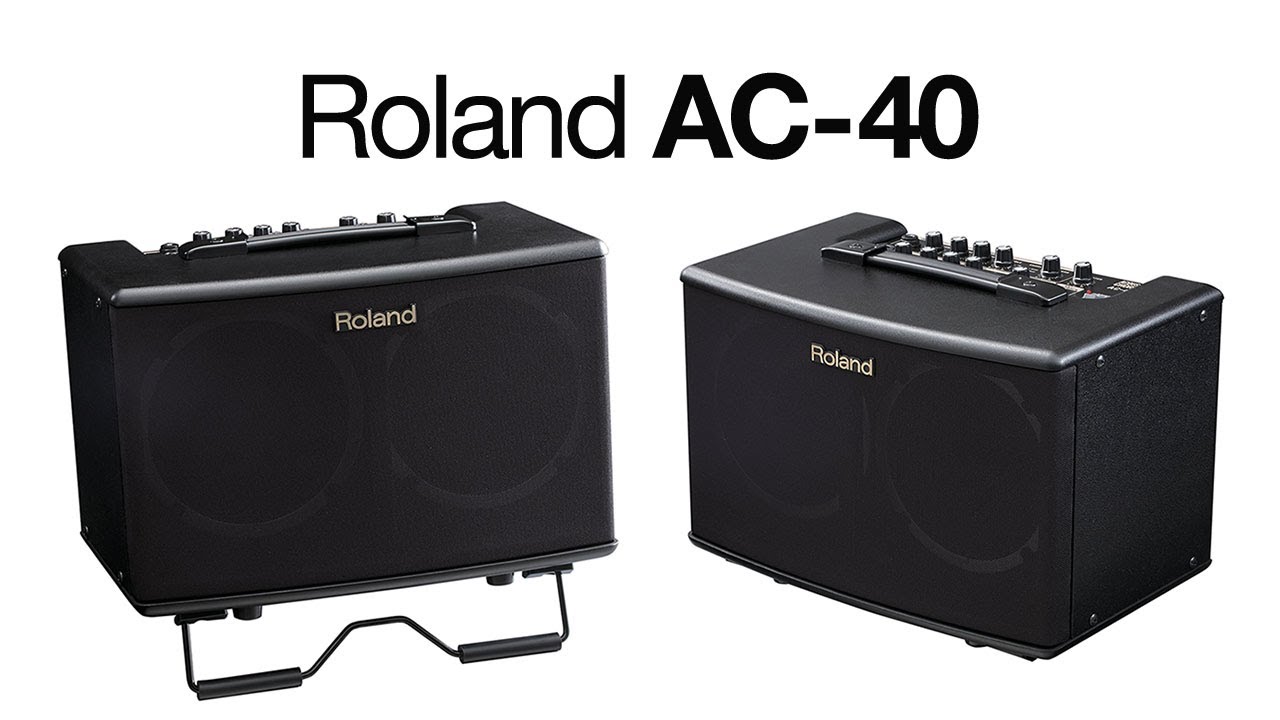 Bigger Isn’t Always Better!
Bigger Isn’t Always Better!
I’m “Old School”, which is really just a nice way of saying “old”, and as such am always surprised by aspects of modern music technology. Bigger was better, simple as that. Walls of speaker cabinets that weighed so much that it took many many people to move them signified quality. Well, times and technologies have changed dramatically and you can certainly add the Roland AC-40 Acoustic Chorus to the list of surprises. Small in size, the Roland AC-40 packs a lot of power and potential into this slight package.
When I first received shipment of the amp, I confess that I wasn’t entirely sure that the amp had even been packaged in the box as something this light couldn’t possibly be capable of producing anything remotely close to what I had heard and read that the AC-40 was capable of. Well colour me shocked because while the amp weighs in just shy of a meagre 12 pounds (5.3 kg), Roland packs incredible sound capabilities and versatile options into this ridiculously easy to use and transport unit.
FEATURES
Roland has packed significant features and multiple options in to this amplifier that should make it appealing to multiple user groups. Aesthetically it is an attractive unit with it’s all black covering, black cloth grille, and easily accessible and readable control panel. On the bottom of the amp is an Arm Stand that pops down and allows you to prop up the front of the AC-40 to get a better angle of projection for the speakers. For its small size and light weight, the AC-40 really feels rugged and solid although if there were one concern for me it would be the cloth grille. The cloth has a fair amount of give to it and is the least rugged aspect of the amplifier. While I may be wrong, and time will tell, it feels like if anything were to get damaged the grille cloth is the likely first candidate.
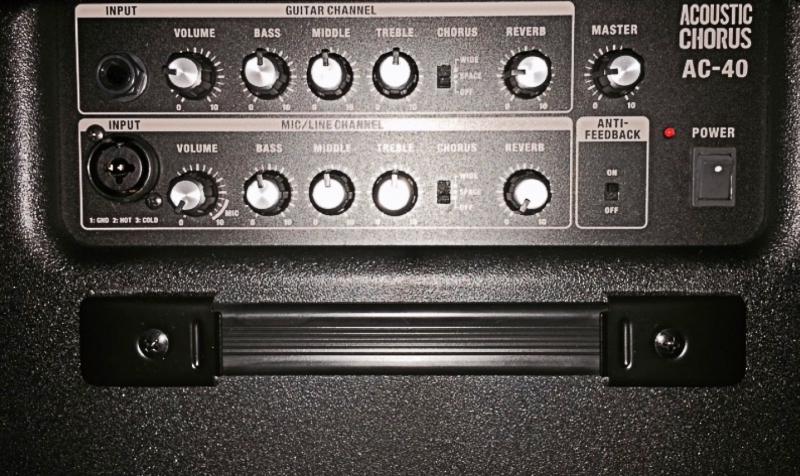 The AC-40 is a dual channel unit where each channel is independent and simply increases your options for application. Located on top of the amp in the Control Panel, the first channel is for a guitar (which requires a pickup for direct input) and as such features a standard ¼ inch jack input. The second channel’s input is an XLR/TRS (TRS is a ¼ inch stereo plug) combo that allows you to plug in a microphone or another guitar. A single musician could then potentially play and sing or two guitar players could play together. By virtue of the second channel and the microphone input, one of these two guitars doesn’t even require onboard pickups as you could simply use a microphone to capture and input the guitar’s natural resonant sound to play back over the amp simultaneously with the other guitar. The AC-40 has 6.5” speakers that produce such a sweet tone as well as more volume than you might assume they possibly could.
The AC-40 is a dual channel unit where each channel is independent and simply increases your options for application. Located on top of the amp in the Control Panel, the first channel is for a guitar (which requires a pickup for direct input) and as such features a standard ¼ inch jack input. The second channel’s input is an XLR/TRS (TRS is a ¼ inch stereo plug) combo that allows you to plug in a microphone or another guitar. A single musician could then potentially play and sing or two guitar players could play together. By virtue of the second channel and the microphone input, one of these two guitars doesn’t even require onboard pickups as you could simply use a microphone to capture and input the guitar’s natural resonant sound to play back over the amp simultaneously with the other guitar. The AC-40 has 6.5” speakers that produce such a sweet tone as well as more volume than you might assume they possibly could.
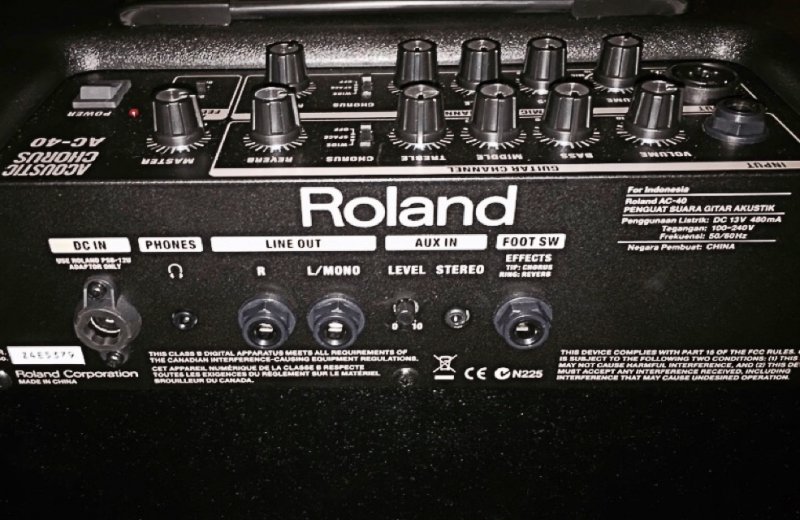
The AC-40 also has a panel at the rear of the unit that is referred to as the Jack Panel. This panel features your DC power jack, a headphones jack, line out jacks, an auxiliary in jack and level knob, as well as a jack for a footswitch controller. The options available here are significant as they create multiple ways to use the AC-40. After test-driving the amp for several days and being really impressed with the warmth and variety of tones that I could produce, I took the unit with me to my band’s rehearsal space since we had a jam scheduled. One of the songs we play is Bon Jovi’s Wanted Dead or Alive and I have always played it on my Jackson electric, run through a Marshall DSL using the effects loop and applying a BOSS Acoustic Simulator effect pedal. For this practise I set up the AC-40, plugged in my electric acoustic, ran a ¼ inch cable from the mono line out in the Jack Panel directly into an open channel on our PA’s board. It took some extra fine tuning to get the tone that I wanted once it was coming out through the PA, but in the end, it had me rethinking how I have been playing acoustic parts thus far and thinking I will probably go with this particular configuration in the future and use it for some other songs we do. While I was able to replicate a decent acoustic guitar sound before, the actual acoustic guitar sound just felt significantly more right using the Roland AC-40.
CHORUS & CONTROLS
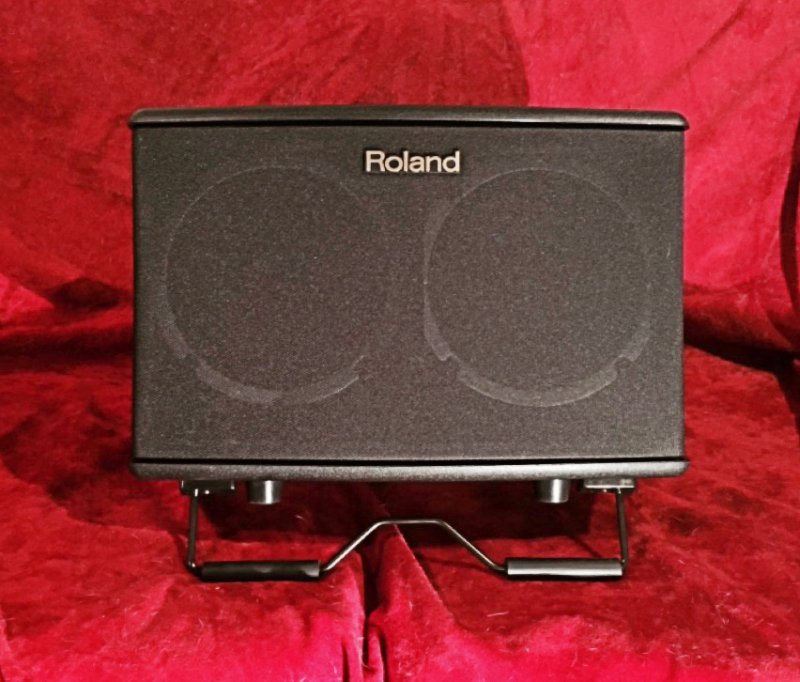 The two input channels each feature their own bass, mid, and treble controls as well as chorus and reverb settings. The range of sounds that can be produced are really quite impressive. There are 3 chorus settings available through a Control Panel switch on each channel: OFF, SPACE, and WIDE. As one might assume, the OFF location means that no chorus effect will be added to the sound. The manual explains that the SPACE setting applies the chorus effect through the right speaker while the left speaker plays the directly inputted guitar sound. The WIDE chorus setting independently processes the low, mid, and high frequency bands to create a deep chorus effect that Roland suggests is appropriate for an acoustic guitar. The AC-40 also has an anti-feedback switch which automatically supresses any acoustic feedback should it occur.
The two input channels each feature their own bass, mid, and treble controls as well as chorus and reverb settings. The range of sounds that can be produced are really quite impressive. There are 3 chorus settings available through a Control Panel switch on each channel: OFF, SPACE, and WIDE. As one might assume, the OFF location means that no chorus effect will be added to the sound. The manual explains that the SPACE setting applies the chorus effect through the right speaker while the left speaker plays the directly inputted guitar sound. The WIDE chorus setting independently processes the low, mid, and high frequency bands to create a deep chorus effect that Roland suggests is appropriate for an acoustic guitar. The AC-40 also has an anti-feedback switch which automatically supresses any acoustic feedback should it occur.
TONE & EFFECTS
I played a Takamine electric acoustic as well as a Fender acoustic with a microphone to capture and input the sound. While it is much easier to just plug in a guitar and play than to fiddle with a microphone and then try and get the proper placement, after it was set up I was infinitely impressed with how the AC-40 was able to capture the warmth of the original sound. Having said that, if I had the option I would always go for the first channel and an acoustic with a pickup simply for ease of use and setup, it is surely nice to have an option though. Of note, the second channel does not have phantom power so you will not be able to use a condenser microphone for this.
I’m generally not a reverb guy as I find that it can be unnatural and distracting but when I added just a little of the digital reverb I noticed a significant new contribution to the sound. The only way I could describe it is to say there was this ethereal grittiness that wasn’t there before. For single note picking some otherworldly passages, I can see this adding a nice dimension to the mix. As far as the Chorus settings, I always seemed to find myself coming back to the SPACE setting as it gave me that tone and feel that I wanted although are certainly applications where I see myself flipping the switch to WIDE.
BOTTOM LINE
With surprising versatility and control in an incredibly mobile little unit, the Roland AC-40 has many places of residence in a modern musicians life. One obvious use is being all a singer-songwriter would require for a coffee shop, small lounge performance, or other similar situation where booming volume isn’t what you are looking for. This amp has enough output options to make live band use a distinct possibility and should be a cornerstone in any home recording studio owing just to the AC-40’s honest reproduction of your guitar’s tones and it’s ability to make them even richer.
|
Rated Power Output: 35 W (17.5 W + 17.5 W Speakers: 16 cm (6.5 inches) X 2 Controls: GUITAR CHANNEL-VOLUME Knob, BASS knob, MIDDLE knob, TREBLE knob, CHORUS switch )OFF, SPACE, WIDE), REVERB knob MIC/LINE CHANNEL-VOLUME Knob, BASS knob, MIDDLE knob, TREBLE knob, CHORUS switch )OFF, SPACE, WIDE), REVERB knob ANTI-FEEDBACK-ON/OFF switch AUX IN:-LEVEL knob Others-MASTER knob, POWER switch Indicator: POWER Connectors: GUITAR CHANNEL INPUT jack-1/4″ phone type MIC/LINE CHANNEL INPUT jack-XLR type, 1/4″ TRS phone type AUX IN jack:-Stereo miniature phone type LINE OUT (L/MONO, R) jacks: 1/4″ phone type PHONES jack-Stereo miniature phone type FOOT SW jack-1/4″ TRS phone type DC IN jack- Power Supply: AC Adaptor Current Draw: 480 Ma Dimensions: 362 (W) X 241 (D) X 265 (H) mm 14-1/4 (W) X 9-1/2 (D) X 10-7/16 (H) inches Weight: 5.3 kg (11 lbs 11 oz) Accessories: Owner’s manual, AC Adaptor, Power cord Options (sold separately): Footswitch: BOSS FS-5U, FS-6 |
Read more about amps here:
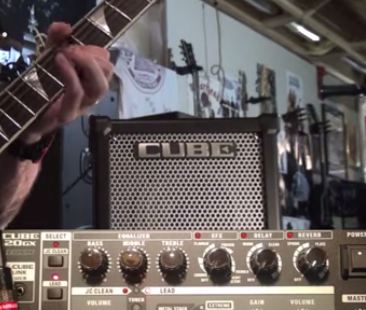 Review: Roland Cube GX20 |
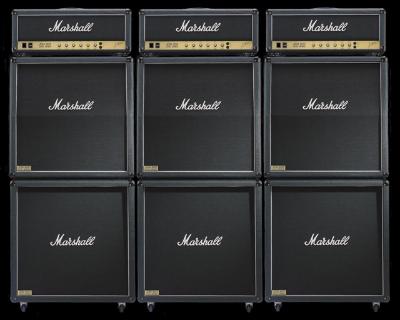 How do I choose an amp? |


